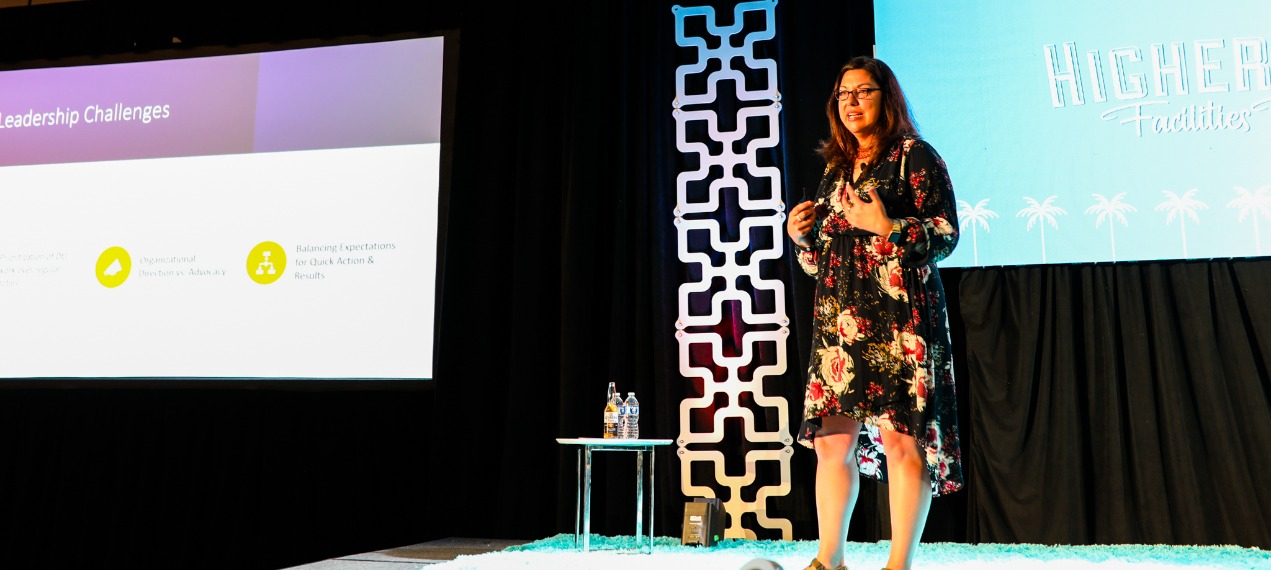In the wake of George Floyd’s murder in the summer of 2020, Indiana University’s Capital Planning and Facilities team members felt called to action to increase the knowledge and awareness of colleagues on the ways in which such developments happening in the world also have an impact on the work environment.
The team approached Vice President Thomas Morrison, the head of Capital Planning and Facilities, about creating an in-house diversity and advocacy team within CPF to ensure equity and inclusion in their daily practices.
In support of this initiative, Vice President Morrison penned, "It is critical that we continue to build a team environment that allows us to create campuses and communities that keep our faculty, staff, and students feeling safe, supported, and included. We can do this by understanding that not everyone is offered the same opportunities and that inappropriate words, phrases, and actions sometimes normalize and encourage the mistreatment of others.
‘Every CPF team member can impact behavior change in a positive way when we respectfully acknowledge to each other on appropriate things to say and do,” Morrison wrote.
"How you interact with people on every level and how you make them feel is what will be remembered."
The newly formed Diversity and Advocacy Team (DAT) had to first define what DEI work looks like in capital planning and facilities, which started with requiring DEI training for all new hires – what Jamie Gayer, Assistant Vice President of Capital Planning and Facilities at Indiana University, says is an immediate opportunity that can be done with the least amount of friction.
As the executive sponsor of DAT, Gayer spent the next two years helping a team of volunteers establish goals, core values, budgets, action plans, and an understanding of what is (and is not) part of the work environment's expectations.
“We started with about 30, maybe 40 people who were all in and excited about this work in diversity, equity, and inclusion,” said Gayer. “Today there are seven people who are doing all of the work. Seven people, with almost 600 staffers.”
Finding the Right Balance
During a recent presentation at the Higher Ed Facilities Forum, Gayer walked through the accomplishments and setbacks they have navigated to create a culture of respect and equity.
For the past couple of years, they held road shows to engage other employees, built a free lending library to house DEI books and literature, encouraged brave conversations, and provided a guide to creating a welcoming space where all employees feel heard, seen, and valued.
Gayer again emphasized the group size going from 40 to 7 people, explaining that because it’s all volunteer work, all the team members had to do this DEI work outside of their full-time jobs. This led to the IU System’s first-ever full-time hire for diversity, equity, and inclusion work in an administrative department (not tied to academics) – a huge step for recognizing the importance of the work they do.
Gayer shared the biggest leadership challenges to the growth and progress of their work:
- Prioritization of DEI work over regular duties
- Organizational direction vs. advocacy
- Balancing expectations for quick action & results
- Ensuring leadership is committed
- Growing the group
- Always keeping in mind: It’s about the long game
Advocating for What's Right
For the disbelievers, Gayer recommends they check their skepticism at the door. “It impacts how we all come to work every day, and what happens outside of work does impact what happens inside the work environment,” she said.
“If you’re advocating for something right, there’s an emotional tie, there’s a purposefulness, there’s a feeling around that word. It’s not just work you are excited about or part of the job that you do; when you are advocating for it, you come at it with a different mind,” Gayer said.
"It impacts how we all come to work every day, and what happens outside of work does impact what happens inside the work environment."
She said their team has been working on how to move from discussion and debate into healthy dialogue and creating an environment where people feel they can bring their whole selves to work.
“The most important thing is that we acknowledge that the way we speak, and the way we behave in the work environment, does impact how people can truly do their work, and then the other piece is that every single team member impacts behavior change,” Gayer added.
Start Small and Think in the Long-Term
Finally, she shared the following key takeaways from the work DAT has done in the last two years:
- We have to teach boundaries.
- Our job is to support our underrepresented colleagues and provide a safe space for them.
- Understand that people define safe spaces differently. It is part of the DEI leadership journey to help people feel heard and validated in that safe space.
- To be long-term, this work has to become personal – it cannot be seen as a checkmark.
- Student engagement is incredibly important in this work because they provide a much-needed perspective and challenge leaders to think differently.
In closing, she encouraged other facilities leaders interested in implementing their own DEI initiatives to start small.
“Talk about privilege and listen to others without judging them,” she said. “Stop, pause, make eye contact, say hello, ask how your teammates are doing. How you interact with people on every level, and – as Maya Angelou said – how you make them feel is what will be remembered.”
Posted by
Join us at HEFF!
An interactive retreat for facilities leaders at the nation's top colleges and universities.
Nov 8-10, 2026 | San Antonio, TX
Learn More









Comments